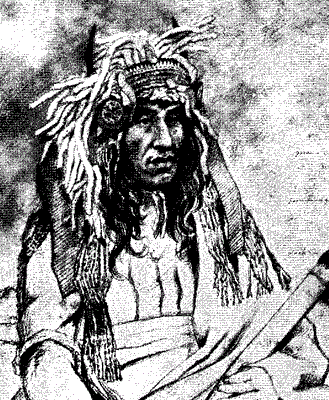Reservation Era Begins 1850-1878
1858
Dakota illegal land seizure and starvation

Dakota Chief Little Crow, worried about the encroaching illegal settlement in Dakota lands by White settlers, travels to Washington, D.C. to ensure that their treaties will be respected and White settlers will keep out of Dakota lands. Instead, the U.S. government takes back half of the Dakota reservation in Minnesota and opens it up to White settlement. As a result, traditional sustenance activities, such as hunting and fishing, are severely limited, leading to Dakota starvation and hardship. Andrew Jackson Myrick, a trader, responds to the Indians’ appeal for food with the comment, “So far as I am concerned, if they are hungry, let them eat grass or their own dung” (Nies, 1996).